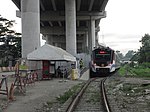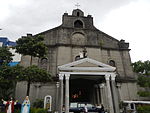University of Caloocan City
Education in CaloocanEducational institutions established in 1971Local colleges and universities in Metro ManilaUse Philippine English from January 2023Use mdy dates from January 2023
The University of Caloocan City (abbreviated as UCC) is a public-type local university established in 1971 and formerly called Caloocan City Community College and Caloocan City Polytechnic College. Its south campus is located at Biglang Awa St., Grace Park East, 12th Avenue, Caloocan, Metro Manila, Philippines (also known as EDSA/Biglang Awa Campus) and the north campuses are Camarin Business Campus, Congressional Campus, and TechVoc Campus (near Libis, Camarin).
Excerpt from the Wikipedia article University of Caloocan City (License: CC BY-SA 3.0, Authors).University of Caloocan City
Samson Road, Carabaocanibal Sangandaan (District 2)
Geographical coordinates (GPS) Address Nearby Places Show on map
Geographical coordinates (GPS)
| Latitude | Longitude |
|---|---|
| N 14.657638888889 ° | E 120.97318055556 ° |
Address
Samson Road
Samson Road
1408 Carabaocanibal, Sangandaan (District 2)
Philippines
Open on Google Maps









